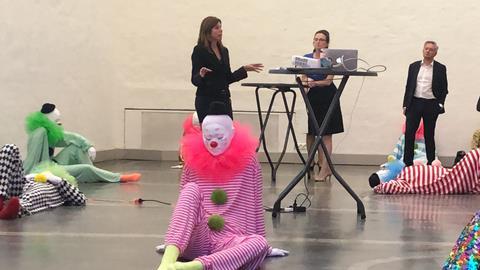Clowns, singers and other installations gave an art school vibe to this month’s Legal Design Summit in Helsinki.
But this was a festival with purpose. It was a call to action to think differently about the future of legal services in order to make law better. And there has been progress. In the five years since legal design (the application of design principles to legal services) first appeared on law school agendas, it has evolved into a global movement for change.
The summit’s organisers aim to change the practice of law by making law understandable and accessible via digital platforms.
At social impact start-up Sis Ventures’ event, co-founders Satu Elo and Hannele Korhonen created a world of rainbows, singers and clowns to accompany presentations on how legal design supports sustainable development goals from contract innovator Helena Haapio, mediator Petra Hietanen-Kunwald and Jarmo Sareva, ambassador for innovation at the Finnish Ministry for Foreign Affairs.
The summit welcomed 500 attendees from 30 countries to Helsinki’s City Hall. Its ethos is to create a community for change. Co-founder and chief executive Pilvi Alopaeus explained that although the event needed sponsorship to cover running costs, it did not accept more than €4,000 from each sponsor, to avoid any commercial organisation driving the content. Attendees covered their own expenses.
High-profile presenters included US academic legal design pioneers Dan Jackson from NuLawLab, Northeastern University School of Law; Stanford Law’s Margaret Hagan; and Vanderbilt Law School’s Caitlin Moon.
Global corporates took part too. Sebastian Hartmann from Big Four consultancy KPMG flagged opportunities for positive change and Microsoft’s European heads of legal demonstrated Seeing AI, a free app for the visually impaired.
From the UK, Michael Doherty of the University of Central Lancashire discussed overcoming the culture clash between law and design, while Jason Dunning from DWF Ventures used the Lion King film to illustrate ‘black box thinking’ (what to do when something does not work as planned).
There were practical case studies from courts and access-to-justice initiatives, but only a few commercial solutions.
Can design thinking really change the practice of law? Haapio quoted anthropologist Margaret Mead: ‘Never doubt that a small group of thoughtful committed citizens can change the world. Indeed, it is the only thing that ever has.’




























1 Reader's comment